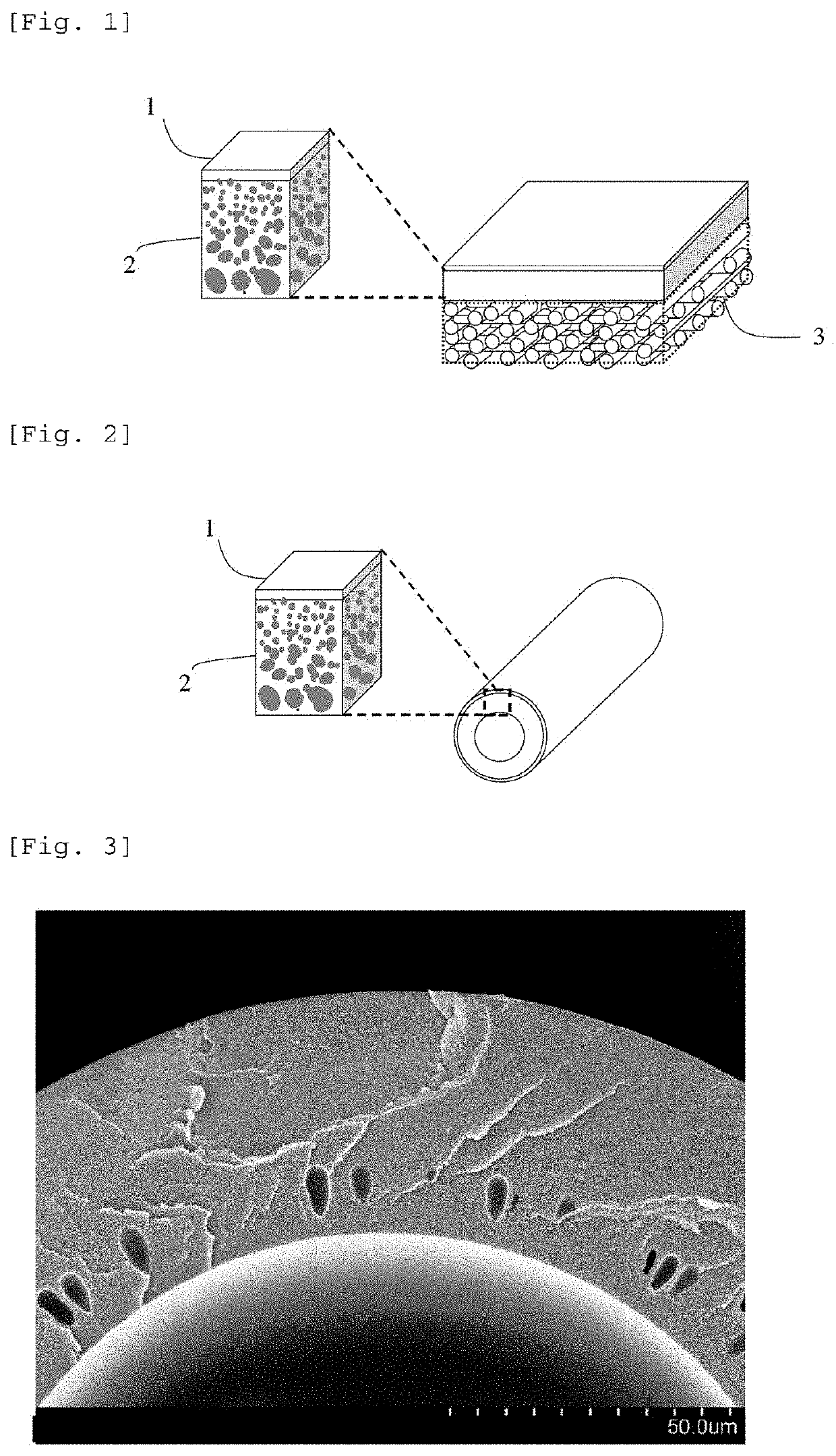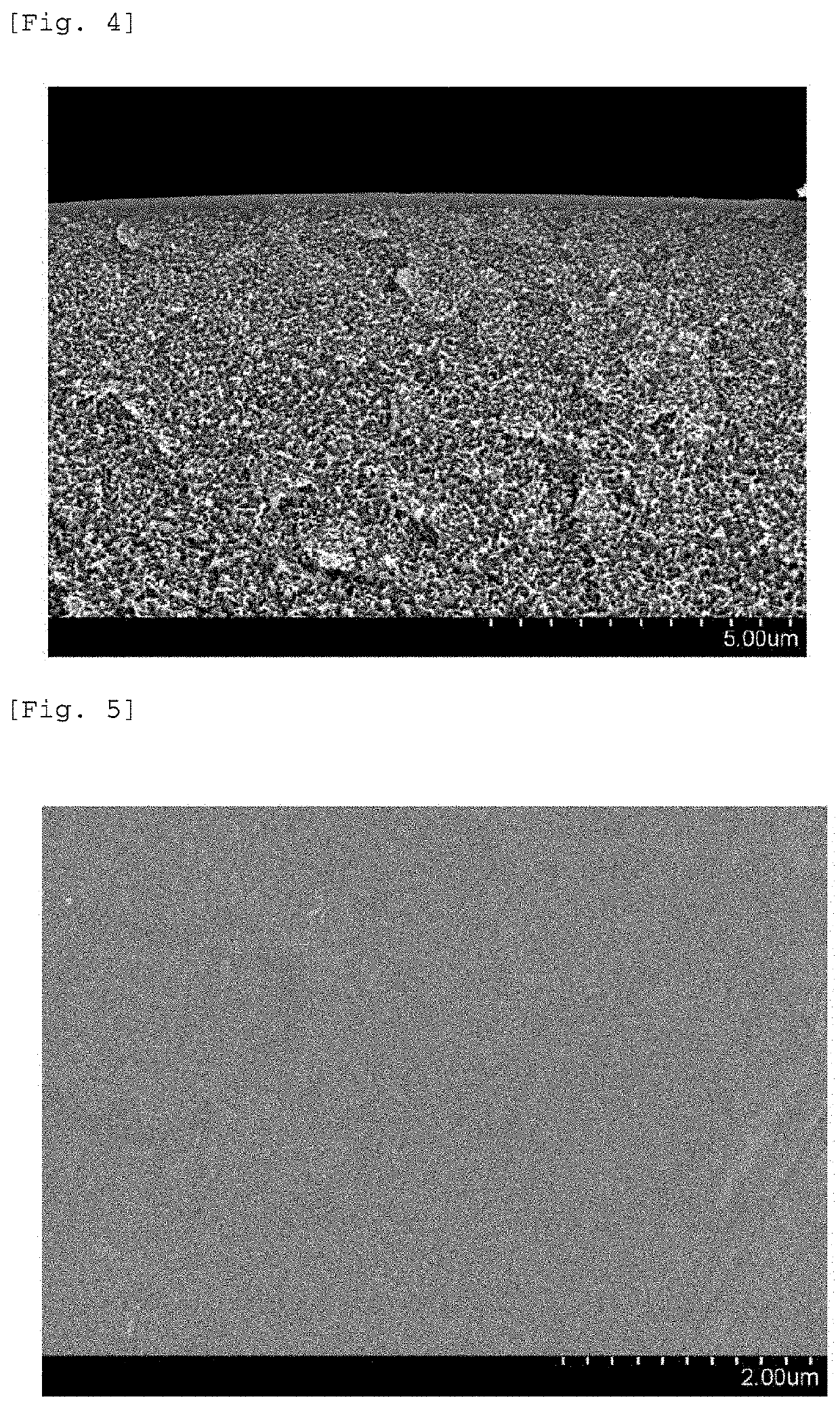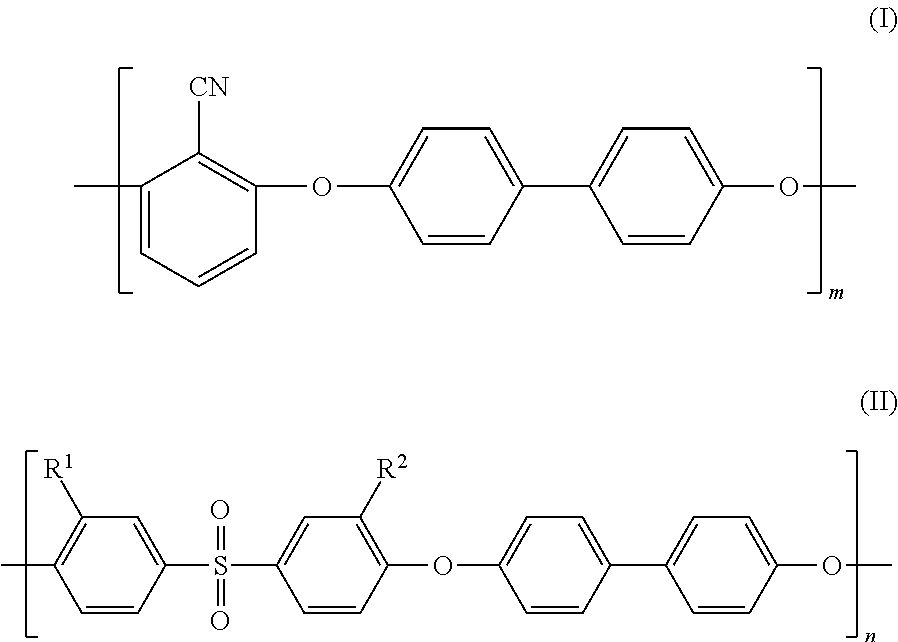Composite separation membrane
a composite separation and membrane technology, applied in membrane technology, membrane filtration, reverse osmosis, etc., can solve the problems of low chlorine resistance, large filtration, low permeation flow rate of water, etc., and achieve excellent chlorine resistance and alkali resistance, excellent separation properties, and long life
- Summary
- Abstract
- Description
- Claims
- Application Information
AI Technical Summary
Benefits of technology
Problems solved by technology
Method used
Image
Examples
example 1
[0102](Preparation of Porous Support Membrane)
[0103]As a polymer for a porous support membrane, Polyphenylene Ether PX100L (hereinafter, abbreviated as PPE) manufactured by Mitsubishi Engineering Plastic KK was provided. N-Methyl-2-pyrrolidone (hereinafter, abbreviated as NMP) was added thereto so as to make PPE content 30% by mass. The resulting mixture was dissolved at 130° C. with kneading to give a homogeneous dope for membrane preparation.
[0104]After that, the dope for membrane preparation was kept at the temperature of 70° C., and extruded from a double cylindrical nozzle into a hollow shape. At the same time, a 70% aqueous solution of NMP was extruded as an inner liquid. The resulting one was made to run in air of ordinary room temperature for a drying treatment, and then immersed in a coagulation bath of 40° C. filled with a 35% aqueous solution of NMP. The resulting PPE porous support membrane was subjected to a washing treatment with water.
[0105]The PPE porous support memb...
example 2
[0115](Preparation of Porous Support Membrane)
[0116]As a polymer for a porous support membrane, a PPE porous support membrane was prepared by the same method as in Example 1 and subjected to a clogging treatment. Outer diameter and membrane thickness of the hollow fiber membrane were 260 μm and 45 μm, respectively. Permeation flow rate FR of the pure water was 5000 L / m2 / day under the test pressure of 0.5 MPa.
[0117](Preparation of Composite Separation Membrane)
[0118]The same operation as in Example 1 was conducted except that the ratio of charging amounts of S-DCDPS and DCBN was changed whereupon SPAE having DS of 15% was prepared.
[0119]A glass transition temperature Tg of the SPAE polymer was evaluated and found to be Tg=244° C. Solubility of the resulting SPAE polymer in 2-methoxyethanol, formic acid and diethylene glycol as the solvents of the solvent group 2 was tested, but no solubility was achieved. The resulting SPAE polymer could be dissolved in any of NMP, DMAc, GBL, DMF and...
example 3
[0122](Preparation of Porous Support Membrane)
[0123]As a polymer for a porous support membrane, a PPE porous support membrane was prepared by the same method as in Example 1 and subjected to a clogging treatment. Outer diameter and membrane thickness of the hollow fiber membrane were 260 μm and 45 μm, respectively. Permeation flow rate FR of the pure water was 4900 L / m2 / day under the test pressure of 0.5 MPa.
[0124](Preparation of Composite Separation Membrane)
[0125]The same operation as in Example 1 was conducted except that the ratio of charging amounts of S-DCDPS and DCBN was changed whereupon SPAE having DS of 26.5% was prepared.
[0126]A glass transition temperature Tg of the SPAE polymer was evaluated and found to be Tg=319° C. Solubility of the resulting SPAE polymer in 2-methoxyethanol, formic acid and diethylene glycol as the solvents of the solvent group 2 was tested, but no solubility was achieved. The resulting SPAE polymer could be dissolved in any of NMP, DMAc, GBL, DMF a...
PUM
| Property | Measurement | Unit |
|---|---|---|
| glass transition temperature | aaaaa | aaaaa |
| thickness | aaaaa | aaaaa |
| thickness | aaaaa | aaaaa |
Abstract
Description
Claims
Application Information
 Login to View More
Login to View More - R&D Engineer
- R&D Manager
- IP Professional
- Industry Leading Data Capabilities
- Powerful AI technology
- Patent DNA Extraction
Browse by: Latest US Patents, China's latest patents, Technical Efficacy Thesaurus, Application Domain, Technology Topic, Popular Technical Reports.
© 2024 PatSnap. All rights reserved.Legal|Privacy policy|Modern Slavery Act Transparency Statement|Sitemap|About US| Contact US: help@patsnap.com










